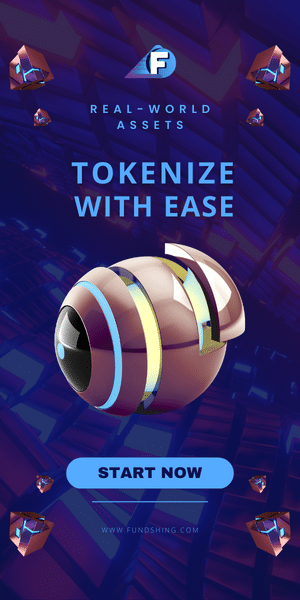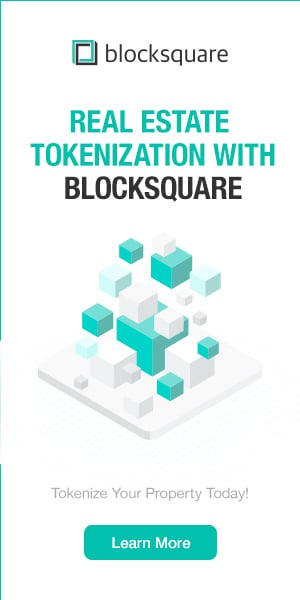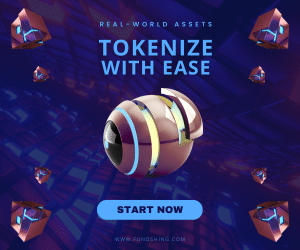Addressing the NFT questions
By Jonathan Yong, Angel Investor
In this article, the NFT Angel Investor Jonathan Yong gives insights into the current state of NFTs from an investor’s point of view. Jonathan is exploring the relation between NFTs, community and prices of NFTs. He also gives valuable insights into how NFTs might evolve.
ApeCoin release, BAYC dropping of The Otherside, Moonbirds flipping Azuki, Akutar Mintpass contract lock, VeeFriends series 2 launch. Much has happened in the NFT space just in the past month alone. Then we have the smaller names such as Dippies, Deadfellaz, tasty toasties, and the ones which rugged – Voxxt, Cutezuki. Some burning questions today include what exactly are NFTs, what is the hype all about, and how do we really value them? In this article I’ll be raising observations in the space and touching on some controversial aspects of NFTs. Feel free to take it with a pinch of salt & share your thoughts in the comments.
- Is the NFT space nothing but an illusion with no fundamental value?
Similar to how crypto-atheists believe that crypto is a scam due to its lack of intrinsic / fundamental valuation, there are those who also believe that NFTs are valueless, or just a JPG. The difference here however is that NFTs are often closely drawn in parallel to art. But the question is how do we value NFTs if there even is any?
To begin with, we should recognize the different types of NFTs that exist today. The following list is non-exhaustive and non mutually-exclusive:
- PFP / collectible NFTs: Moonbirds, CryptoPunks, Mfers, BAYC
- Utility / gamified NFTs: STEPN, Creepz.io; Llamaverse Genesis
- Sports Memorabilia: NBA Top Shots
- NFT gaming NFTs: Axie Infinity, Pegaxy, SolChicks
- Metaverse lands: NFT worlds, Sandbox land, Decentraland, TheOtherside, Memeland
- Music NFTs: AmbieNFT, RavePigs
- Domain names NFTs: ENS, Cryptovoxel names, Unstoppable domains
- Art-focused / story-focused NFTs: Mems, Mauer, CloneX, Murakami.Flower
At time of writing, Bored Ape’s floor price sits at 142ETH while Moonbirds floor price at 35ETH. People often tend to associate the value of these NFTs to be that of their current market price. However, not many account for the fact that the floor price is determined by the seller which puts up his/her NFT for sale at the lowest market price. Often, sellers will want to sell at a price higher than how much the public perceives it to be, while buyers will want to buy at a price that is lower than the perceived price.
While some projects seek to associate their project with real world utility, some launch tokens alongside to give the project monetary utility. Just a week ago, I spoke to the founders of a project that provides NFT holders with merchandize perks and discounts, such discounted Starbucks drinks, discounted Decathlon products, or discount on Grab (superapp) products & services. Imagine being entitled to one free Starbucks coffee per week for the rest of your life if you hold a Metanoia NFT. Does this place an intrinsic value of your NFT, hence setting a true floor price on your NFT?
Let’s talk about STEPN. STEPN, is a Move-to-Earn project that pays you for walking daily if you hold a STEPN NFT, with rewards varying according to factors such as number of NFTs you hold, quality, type of NFT. An average user gets paid about USD$46 in native tokens $GST for holding a runner shoe. Should the perceived value of a STEPN shoe then be a factor of the daily payout, or should it include other qualitative factors such as health benefits, entertainment & social value?
There really isn’t a conclusive answer here, but in my opinion, the value of an NFT ultimately is subjective and differs from person to person, community to community, and the majority consensus then determines the quantitative value of an NFT. The NFT market is often ridiculously and unreasonably priced. It may be easier to put a numerical value to NFTs with utility over NFTs without (such as pure art, pfp etc.), but giving utility to NFTs then basically means transferring the risk of NFT over to the token price (if the utility is in the form of token). From my observation, often, gamified projects that launch their own utility coin sees their coin price die off after a period.
- For those who say “NFTs are all about the community”, is this just a marketing gimmick?
Having participated and sat in a fair share of twitter spaces and project discord community chats, a common consensus amongst many (especially blue-chip project holders) is that getting an NFT “is not about how much you can earn, but the community that you get associated with, the people you meet.”
However, it is true that communities you get involved in via NFTs are sometimes amazing. With events being hosted on metaverse lands, or even twitter spaces, clubhouse, connect.club, and other social media platforms, the value you takeaway often depends on how much time you choose to invest in these spaces, and to what extend you go to interact with the community. With projects launching campaigns / events like twitter-follow-twitter, or in real-life meet-up sessions, these communities can get you involved and connected.
Then, we have the cultural aspect of the community. Having held on to a Deadfellaz for a few months now, I notice a mix of cultural differences between holders. The more active a member is, the more cultural influence he/she brings to the community, with of course the founders at the top of influence. Members holding a Deadfellaz come from all sorts of race, ethnicity, religion, background etc. It is true that sometimes it’s hard to communicate or understand conversations due to cultural differences, but at the same time it teaches one more about each other’s culture.
“not about the money” however, is an incorrect representation in my opinion. People chase the highest prices NFTs as prices are often tagged with affluence and social class. Media often place a spotlight on the “most expensive” NFTs simply because it captures the most attention. When talking to my fellow NFT gaming degens today, it is often brought up that the goal is to own a BAYC ultimately. People work their way up to a BAYC because it brings “title” or “class status” to an individual, and in this case, IP commercial rights for them to start a business. Some people get it because it gives them the limelight, or the ability to flaunt it. Yes, this shows that BAYC has established its loyal community, brand identity and marked its blue-chip spot in the NFTverse. Its recognition around the world has given rise to a high-value community where people are proud to be a holder of the NFT. However, does this stand true for all other NFT projects?
Today, we are seeing a shift of focus from small cap NFTs to blue-chip NFTs as huge amounts of money by the wealthy is being poured into blue chips. A trend that I’ve noted is that as floor prices of blue-chips, such as Yuga labs NFTs, Moonbirds, Azuki, CloneX continue increasing, floor prices of non-blue chips generally either see a dip or stagnation. No doubt, every project (including blue chip ones), will have its pool of speculators, flippers and profiteers who are here to earn the quick buck, jumping from community to community. Loyalty hardly exists in communities, especially for those that are not as well supported by big names, celebrities, and influencers, those which do not see their floor price going “to the moon” after a period of time, or those which see their floor prices dipping overtime.
Looking at how chat rooms start to fill up with price concern topics or even turn to a FUD in smaller projects whenever the price dips, I am inclined to believe that the strength of a community is ultimately still highly influenced by “the money” and that it is harder for non-blue-chip projects to establish the community. A question I’d like to leave off with – How many of you actually engage with the community of the NFT you own on a regular basis?
- What do people lookout for in deciding whether to buy an NFT?
Communities take a long time to build and develop. Back in early 2021, many new NFT projects were being launched due to the initial NFT hype then. Never did we know, the market shifted away from NFTs to a focus on NFT gaming, led by the hype of Axie Infinity. This lasted from somewhere around March to October / November of 2021. An article by Coindesk states NFT gaming took up 52% of total blockchain activity in 2021. As many NFT games start to over-promise and under-deliver, and projects fundraising prior to game development, the NFT gaming market then experienced a cooldown, along with the overall crypto market. NFTs then started to regain its traction and exploded a second wave. With so many projects launching and jumping onto the bandwagon, it was almost impossible to spot projects that will be successful in the future & people were falling for rugpull projects.
Which NFT will see the next boom? Which NFT should I buy to make money on? How do I know if the project is not a rugpull? Which NFT will JRNYCrypto, Ryan Carson, Jimmy Fallon ape into next? I’m sure these are some common questions amongst NFT investors, even those new in the space.
Just yesterday, I was engaging in some surface level research on the top 100 NFT projects under 0.35ETH on Opensea. I was looking into the website, the trading charts, the discord and other social media channels of these projects, trying to understand more about the team, the community and ultimately the potential of the project. Through doing so, I was surprised to find many projects that are quite promising. Of course, it is highly suggested not to trust the information you see on the web.
Screening projects also helped me realize what are some of the factors that are important to myself when looking to get an NFT. Here’s a list of non-exhaustive factors (by no order of ranking) to consider when researching for a project:
- Artwork
- Gamification & Utility
- Metaverse association
- Creator / team credibility
- Partnership & brands associated
- Social media follower count & hype
- Influencer involvement
- Project roadmap & vision
Whether a project is worth investing into really is subjective and differs from person to person. Ultimately, NFTs are about how you value the art / project and how you value them can differs from you to me. Personally, creator credibility, artwork, project roadmap and vision, plays the top 3 most important traits of a project. Perhaps it may be different for you. I would highly encourage any NFT goers out there to get their hands dirty by doing the same exercise and understand their personal preference when coming to NFTs.
Another important exercise I highly encourage is to be present for twitter spaces sessions and see if the conversation inspires, educates, or interests you. These twitter spaces sessions often enable us to have a better feel of the team’s capabilities, exclusive information to the projects and exposes you to insightful sharing on really anything about the industry.
Today, eyes are on big names and upcoming drops & launches such as Vee Friends Series 2, TheOtherside, Memeland. These projects often steal the attention from other smaller cap projects which are deserving of some attention given the extend founders go to value-add to the community. I see this as a double-edged sword as on one hand attracts more flippers in new launches and small cap NFTs, bringing more pessimism and destroying confidence among the community. On the other hand, if floor prices of these small caps diminishes, it may be a good buying opportunity.
- NFTs are centralized and buying an NFT is after all, entrusting your money with the founders
Yes, Web3 provides freedom for everyone to launch their project & it is often discussed how less-recognized musicians who have surmountable amount of talent, now have a platform to make a well-deserving name in the space thanks to decentralization in the web3 space. In fact, the NFT space is a great space to start a business and we are seeing many projects launch merchandizes or even fast-food chains using IP commercialization rights. Projects sell out their NFTs and use the funds to attempt to build a brand name.
However, we need to recognize that majority of the NFT projects are centralized. To date, I have not known of any NFT projects that are fully decentralized, other than maybe Decentraland. A fully decentralized project is one in which all decisions are completely voted by the community, including expansion plans, finance and others. While we see some projects like Bored Ape Yacht Club now have a DAO in which voting rights is based on the amount of ApeCoin you hold, most other projects have their founders holding full control of expenses, budgeting, and development plans. Some founders are 100% committed to building up the project and will find all means to bring value to their community, while some just lack the connection, experience, and capability. Others promise their users the world prior to launch, but under-delivers or pay themselves lavishly using the funds raised. Only a handful of founders can turn their projects into a success story. In my opinion, entrepreneurship in the web3 space is similar in the sense that it takes good timing, resources, connections, experience and some luck to make it.
- Is the NFT market becoming exclusive?
With the focus being diverted towards blue-chip NFTs, attention is often diverted away from small cap projects as a result. There can only be a limited number of blue-chip NFT holders, which makes “membership” limited. Coupled with the exorbitant prices of blue chips, the entry to these communities as a holder becomes even more so exclusive and only “For the rich”. Does this fact then defeat a key purpose of web3 – Inclusivity? The fact is that it is not possible to include everyone in a single community after all.
As a solution, project owners are coming up with ideas to integrate communities between projects via partnerships, or even new project launches with a mix of founders. Memeland is a metaverse land NFT project founded by the CEO of 9GAG. The project sees project founders from successful projects such as Gary Vee (Vayner Media / Vee friends), Kevin Rose (Proof / Moondbirds), Danny Yang (OnChainMonkey), sitting on the board of advisors / investors, integrating communities from each other’s project.
- Invest only in projects that are audited
Many would have been aware of the Akutar Mintpass flawed smart contract lockup, where 34million is “locked & lost” forever. Here is the link to the decrypt article on it for those who have not read about it: https://decrypt.co/98530/aku-ethereum-nft-launch-ends-with-34m-locked-in-flawed-smart-contract A brief context: Contract exploits were overlooked by the team despite having been warned by a couple of public users. Flaw in the project fund claim code causes project funds to not being able to be claimed forever. Team acknowledges the mistake then and proposed to refund Akutar mint pass holders plus drop them NFTs separately. Contract was never audited.
Apart from the above incident, having a project audited is also highly essential in lowering the chance of a rugpull, and gives investors more confidence in investing their money into the project. However, it is important to note that the credibility of the audit project plays a significant role too. Companies like Hacken, Solidity, Certik have higher credibility but certainly comes at a higher cost. Nevertheless, while audit companies usually do in-depth KYC and due diligence on the team, founder and project, having a project audited still does not equate to 100% rugpull or project success assurance.
- Should you start your own NFT project?
Influenced by the number of project sellouts, amount of money raised and market cap of the NFT market today, people start to realize that it may afterall be better starting your own NFT project. However, is it really that easy to start an NFT project?
It’s interesting to see how Larva labs, Yuga labs, PROOF collective are driven by western influence. Starting an NFT project is basically entrepreneurship and a lot of it has to do with connections and influence. It is harder for a project that has no founder credibility to take flight, as compared to a project with founder credibility. Back then, before the influx of institutions and big names, perhaps one could strike a better chance at succeeding launching a project. Going to be honest and say that today, if I were to start a project, the chances of it succeeding is very slim. However, does that mean one should not start a project?
I would say one of the hardest yet most important is getting the team right and the founding team plays a crucial role. The last thing you want is having formed the team, getting the commitment of afew others only to see your co-founder jumping ship to a better opportunity that was thrown to him / her, and the worst thing is without communication but ghosting. Communication is a key factor. Start small, don’t seek to launch a 10k collection NFT of high prices, know the community you want to attract. Have a gameplan, follow through, don’t rush to onboard your team, and enjoy the process. If the project fails, be accountable, learn from it and resolve it before moving on.
Just 2 days back, uneasiness amongst the Moonbirds community started brewing because the COO, Ryan Carson, twitted that he was shifting his focus on his fund, 121G.fund. To the community, it wasn’t the right thing to do given that moonbirds took flight only 5 days ago.
People expect founders to be committed to their project and have 100% focus. Personally, I do not agree with the way Ryan Carson handled this because he made this tweet prior to communicating it with his co-founder, Kevin Rose. One key issue I noticed brewing among the crypto scene today is that many founders have multiple commitments and accept multiple roles in multiple projects all at the same time. Some may say they can handle and cope with it, but it is really hard to get the community & investors to believe so.
Concluding statements
TL,DR:
- No, NFTs are not all about the community, it is also about the money. Ultimately NFT prices are tied closely to affluence and class status. While the NFT market is showing signs of cooldown, there are still some good projects out there.
- Everyone may value an NFT differently, it is important to understand your own valuation stance for NFTs. Jump on twitter spaces, clubhouse, connect.club. events to see if this is something that provides value to you, something that you’d appreciate, and find a spot in the community by engaging with them.
- Understand that NFTs are in a way still centralised and governed by the founding team
- NFT markets are exclusive, this is unavoidable. However, solutions are being explored to integrate communities today.
- It is recommended (not necessary) to invest only in projects that are KYC and audited.
- Don’t limit yourself when launching an NFT project, have a gameplan, find the right team, and follow through.
Learn more about NFTs on NFT by The Tokenizer.
Read other stories: WisdomTree Announces Agreement with Fireblocks to Build on Tech Stack for New Blockchain-Native Mobile App, WisdomTree Prime™




















